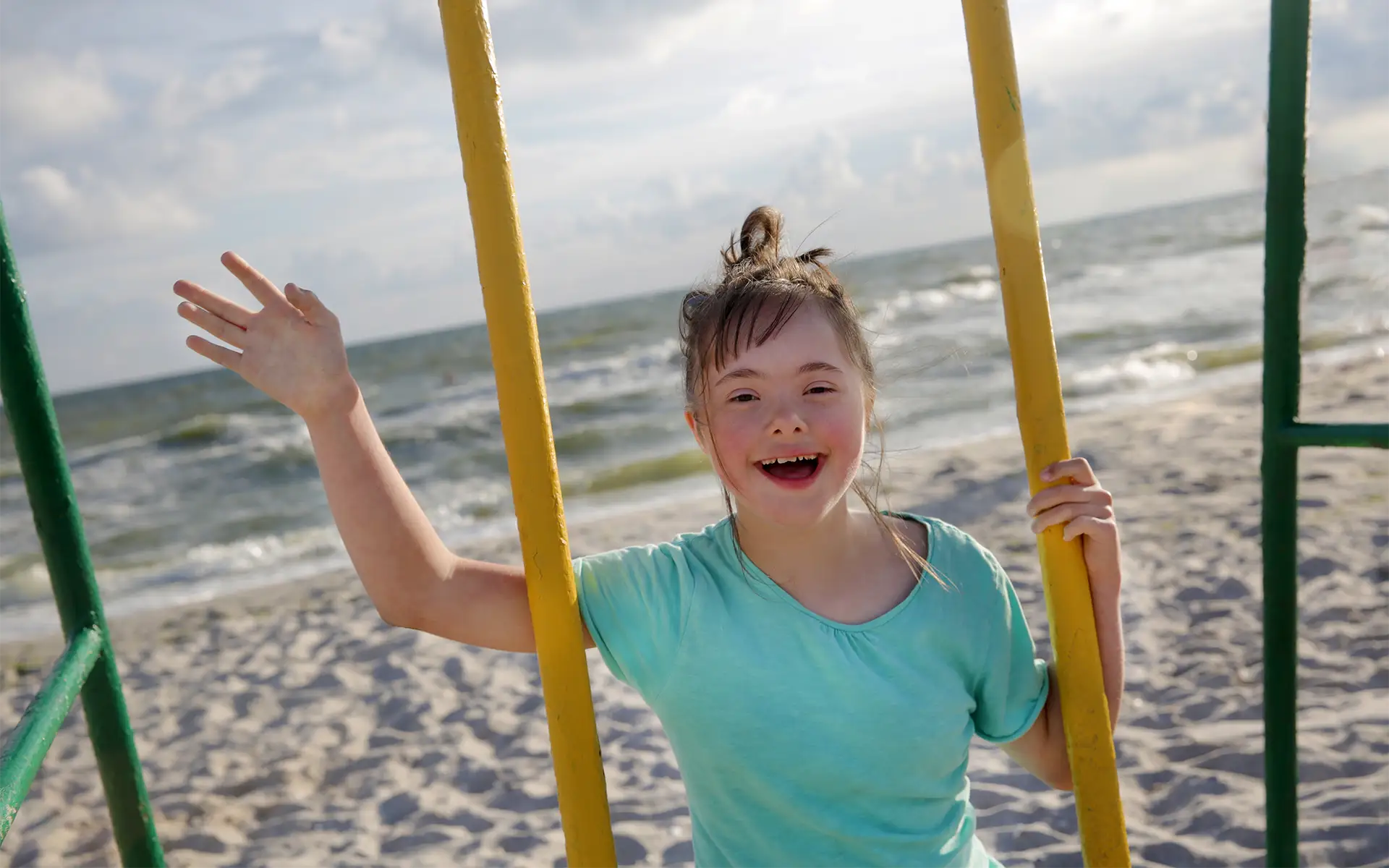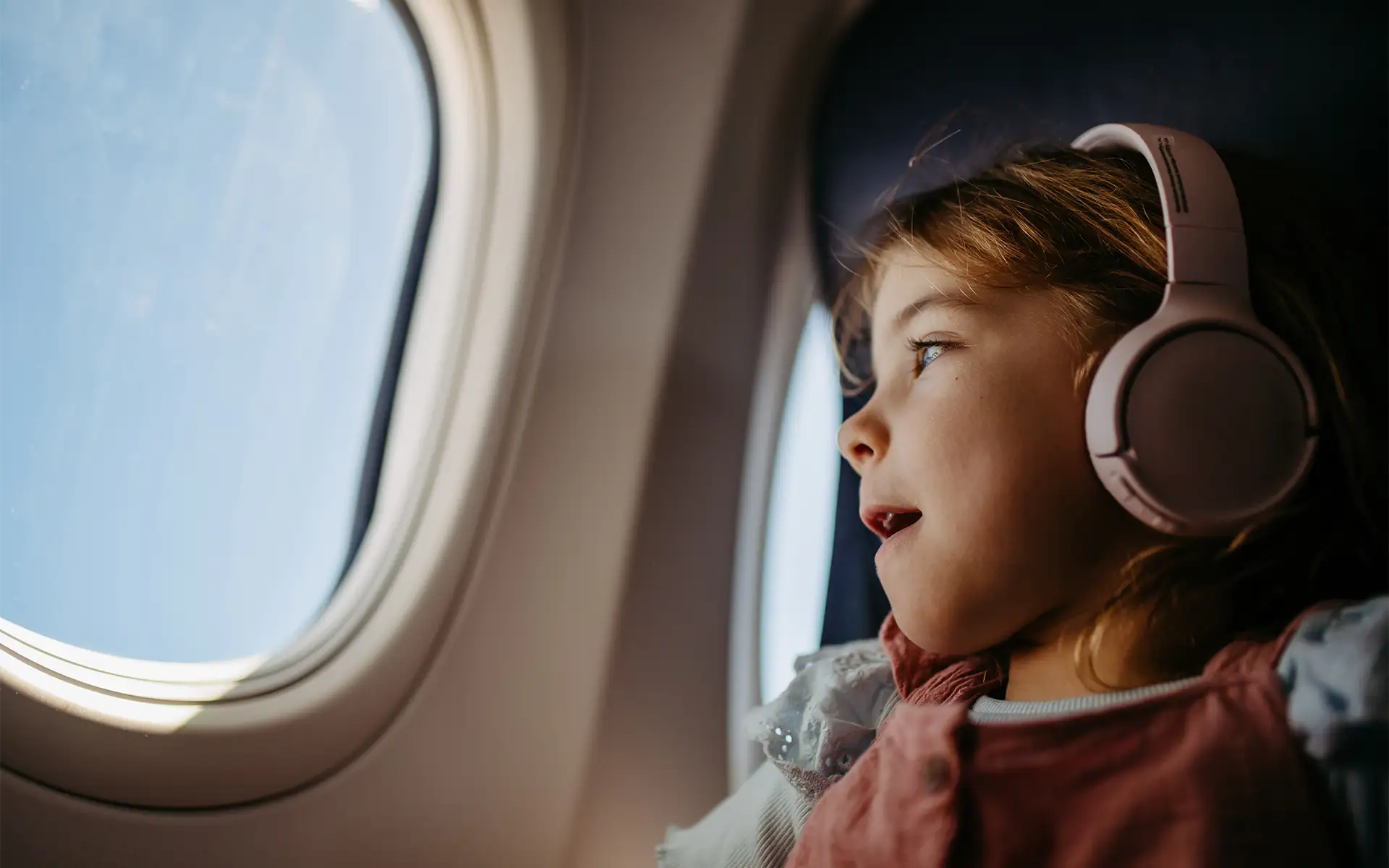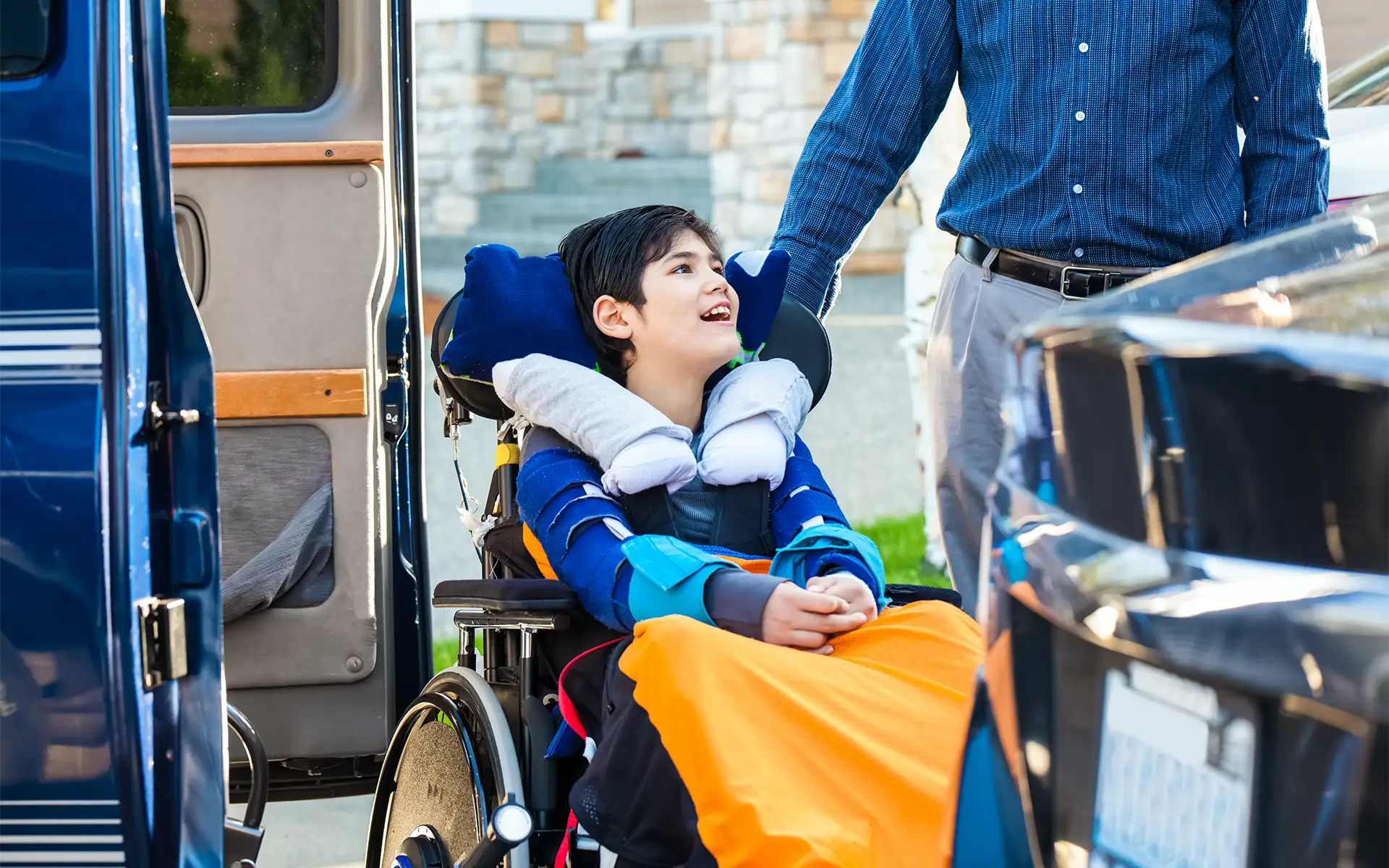
The holidays are a time of joy, togetherness, and celebration with family and friends. However, the journey to and from a holiday destination can be hectic at this time of year, especially with children. And for parents of children with special needs, the stress of travel can be heightened by concerns about accessibility, comfort, and how to manage unpredictable situations on the go.
The good news is that with thoughtful preparation and the right mindset, travel becomes a more positive experience for the whole family. A little planning goes a long way in minimizing stress, maintaining routines, and ensuring your child feels safe and supported throughout the trip. In this blog, we outline practical tips for parents traveling with a special needs child that can help smooth the process and ensure a safe and comfortable journey during the holidays.
Planning Ahead
When faced with routine disruptions and unfamiliar surroundings, managing travel during the holidays with a special needs child requires thorough and careful preparation. Planning ahead ensures parents and their child are equipped to address challenging situations, helping manage expectations and reduce stress. From long waits, unexpected delays, and heightened noise, travel environments are fraught with sensory overload. Not to mention the crowds of unfamiliar people.
How do you plan for the unexpected? By being prepared to control what you can in uncontrollable situations. Parents traveling with a special needs child already know how to prepare for everyday routines, understanding their child’s unique needs. Therefore, the strategy for holiday travel is to have a plan for managing unwelcome scenarios, including flight delays, crowded security checks, long stretches on the highway, and worse-than-usual traffic or inclement weather.
Pre-Travel Preparation Checklist

Lists are your best friend when planning travel. There will be items to consider outside of your everyday routine essentials, including medical documents, therapy notes, and communication tools. Taking time to prepare these in advance can make your trip smoother and less stressful. Below is a guide to help you plan what to pack and how to stay organized.
Understand Your Child’s Unique Needs
As a parent, you know your child better than anyone. However, travel introduces new environments, routines, and potential challenges that can affect children in different ways. Taking time to think through their specific developmental, sensory, or medical needs in relation to the travel itinerary will go a long way, helping you visualize possible scenarios and how best to handle them.
Begin with the basics, such as medical, adaptive, sensory, and emotional priorities. For example, if your child uses Augmentative and Alternative Communication (AAC) tools to express themselves, consider whether you’ll need backup batteries, chargers, or additional symbols for new settings. Similarly, think about what sensory supports, such as noise-canceling headphones or comfort objects, can help your child feel calm and secure during the trip. Consulting with your child’s therapist will be helpful, as they may think of things you haven’t considered based on their experience.
Gather Medical & Therapy Documents
Plan to have your prescriptions filled and ready, especially since pharmacy hours may be limited or closed for the holidays. Organize therapy notes, doctor’s letters, emergency contacts, and care plans in a folder or digital file you can easily access during travel.
Research any medication regulations that apply to your trip. For example, airlines and cruise ships often have specific rules regarding liquid medications, medical equipment, or controlled substances. Having prescriptions clearly labeled and supported by a doctor’s note can help avoid delays or complications during security checks.
We also recommend reviewing your travel insurance coverage to ensure it includes medical care tailored to your child’s specific needs, including any requirements. For example, some policies may need documentation from your child’s healthcare provider.
Communication Tools & AAC Devices
As mentioned earlier, if your child relies on AAC devices or other communication tools, ensure they are fully charged and ready to use. Also, pack extra chargers, power cords, and backup batteries in your carry-on for easy access. Ensure their communication tools include any language associated with traveling, such as “airport” or “bathroom.”
Packing Essentials for Comfort
When traveling with a child with special needs, comfort is essential. Depending on your child’s needs, soothing tools can include:
Sensory & Soothing Items
- Sensory toys, fidgets
- Noise-canceling headphones
- Sunglasses or a hat (to reduce sensory overload)
- Oral sensory tools
- Soft-textured clothing or favorite pajamas
Familiar Comforts
- Favorite stuffed animal or blanket
- Favorite snacks or familiar foods
- Small pillow or favorite blanket
- Photos of family, pets, or home for reassurance
Air Travel with a Special Needs Child

Airports are jammed during the holidays. And to be honest, despite the holidays, the stress of travel doesn’t always bring out the best in people. Again, preparation is key to navigating airports and flights calmly and comfortably when traveling with a special needs child.
Before the trip begins, prepare your child to help manage expectations. This can be through a social story about traveling, reading stories about flying, or even a show-and-tell trip to the airport.
Here are some expert tips that can help make holiday travel as smooth as possible:
Before You Fly – Booking and Preparation
When booking your flight, look for an option to select special needs assistance. If you do not see it during the booking process or are using a third-party site, then be sure to call the airline directly to request assistance for your specific flight. There is a special code in the travel industry that alerts airline personnel of special needs, DPNA, which means “passenger with developmental or intellectual disability needing assistance”. This code alerts staff, such as gate agents, flight attendants, and ground crew, that your child may require additional time, communication support, or guidance during boarding, security, or while in-flight.
When traveling with a special needs child, we recommend booking direct flights to minimize travel time and airport layovers whenever possible. Also, delays are less common with earlier flights, and children are typically less fatigued. For seating, select seats toward the front of the plane for quicker boarding and deplaning. Consider bulkhead seating, which is the first row of each section, if your child needs extra space or privacy. These seats have more legroom and fewer visual distractions.
Communication is key. Even if your child’s ticket carries the DPNA code, speak to the gate agents and flight crews to ensure they are aware of your child’s needs.
At the Airport – Security & Sensory Overload
It’s wise to expect crowds at security checkpoints, especially during the holidays. Unfortunately, the entire process can be generally overstimulating. Discuss the security process with your child ahead of the trip, including what’s expected and possible pat-downs, to help them feel more prepared and at ease. You can show them videos (TSA has a YouTube channel) or take a field trip to the airport to observe.
If you are overly concerned about the security process while traveling with a special needs child, contact TSA Cares ahead of your trip (at least 72 hours prior). TSA Cares is a complimentary service that offers support to travelers with disabilities or medical conditions. They will arrange for a TSA Passenger Support Specialist to meet you at security and guide your family through the process with extra care and patience.
During the Flight
Airplane cabins can be noisy, cramped, and filled with unfamiliar faces – all of which can trigger sensitive children. Therefore, introduce yourself to the flight crew and explain your situation. Most crews are compassionate and willing to offer small accommodations, such as storing medication or checking in periodically to ensure all is well. Also, have your comfort items accessible during the flight. If your child begins to have a meltdown, stay calm and focus on helping them regulate rather than worrying about other passengers.
Road Trips and Alternative Travel Options

Although traveling by car, bus, or train doesn’t involve crowded airports, it still deviates from routines and can be challenging. Here are some helpful tips to help prepare your family for the journey.
Traveling by Car
For families that prefer the open road, planning ahead can help make the trip as comfortable as possible. Begin by ensuring your child will be safe and comfortable in their car seat, booster, or harness. Keep essentials, such as medications, comfort items, snacks, entertainment, and communication tools, within easy reach while driving. Additionally, research and plan rest stops in advance, selecting quieter, less crowded locations whenever possible.
Train or Bus Travel
Traveling by bus or train often delivers a smoother ride and more space to move, making it more comfortable than flying or driving in some cases. Many trains and buses allow families traveling with a special needs child to board early, providing extra time to find seats and settle in. When booking, request seats near the aisle or restroom for easier access and flexibility.
Cruise or Resort Vacations
Many cruise lines and resorts now offer inclusive programs and accommodations designed for guests with sensory sensitivities or neurodiversity, helping families feel supported and comfortable throughout their stay. Communicate with staff beforehand about your child’s needs so that they can support any necessary accommodations before your arrival.
Finding Accessible Accommodations
Hotels willing to support families traveling with a special needs child can be a game-changer during your trip. Here is a quick list of what to ask before booking.
- Are rooms accessible for mobility devices?
- Is the hotel floor plan safe and easy to navigate?
- Are quiet or sensory-friendly rooms available?
- Can the hotel accommodate special dietary or medical needs?
- Are elevators and ramps available in all key areas?
- Are there staff members trained to support guests with developmental or sensory challenges?
Helping Your Child Feel Safe Away from Home
The most important thing you can do while traveling with a special needs child is to maintain as much of their routine as possible. This familiarity will help them feel secure and confident during the trip. Communicate with your child beforehand, explaining what the trip will involve and what they can expect. Consider practicing aspects of the trip in advance, like packing their own bag or sitting in a car seat for a “trial” ride, so the experience feels more predictable. Also, your child’s therapist is a valuable resource and can help prepare your child while providing parents with helpful tips.
Managing Sensory and Behavioral Challenges
There are plenty of triggers associated with traveling, including noise, crowds, change, and unexpected sights. We recommend working with your child’s therapist before the trip to develop a calming and recovery plan should the need arise.
Recognizing Signs of Overstimulation
Common signs of overstimulation include: covering or plugging ears, pacing or rocking, repetitive movements or vocalization, or sudden meltdowns or withdrawal. Being aware of and watching for these signals allows parents to intervene early and provide support before stress escalates.
Calming Techniques That Work
If you notice any signs of overstimulation, try simple strategies to help your child self-regulate. These can include breathing exercises, sensory breaks in quiet areas, or playing soothing sounds through their headphones. Ground techniques are also helpful, such as feeling a textured object or focusing on five things you can see, hear, or touch.
Trip Ready for the Holidays
It’s true that traveling with a special needs child during the holidays can present challenges. However, careful preparation and communication can go a long way toward smoothing the process and helping children adapt. Thoroughly anticipating your child’s needs will help ensure their comfort and safety, while also reducing stress and creating a more enjoyable experience.
Contact KidsCare Home Health
KidsCare Home Health is a leading pediatric in-home healthcare agency, offering compassionate therapy services (including occupational, speech, and physical therapy) and nursing services nationwide.
Seeking therapy or have questions? Contact us today!















